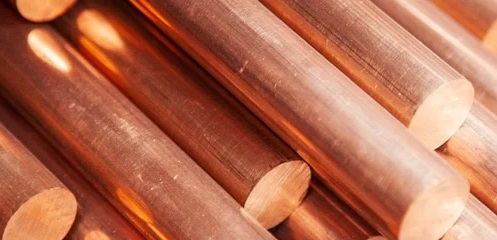Copper, as a valuable nonferrous metal, has been deeply involved in the process of human civilization since the ancient Bronze Age. Today, in an era of rapid technological development, copper and its alloys continue to play a key role in many industries with their excellent performance. In the copper product system, red copper and brass are widely used in different fields due to their unique performance and characteristics. A deep understanding of the differences between the two, application scenarios and procurement considerations can help companies make the best decisions in a variety of scenarios.
The Essential Difference Between Red Copper and Brass
Composition
Red copper, that is, pure copper, usually has a copper content of more than 99.5%. High purity gives red copper excellent electrical and thermal conductivity, making it the only choice in the field of electrical and thermal conduction. Brass is a copper-zinc alloy, and the proportion of zinc added directly determines its characteristics. Common brass contains about 30% zinc. The addition of zinc not only changes the original color of copper, but also significantly improves the strength and corrosion resistance of the material.

Appearance and Color
Due to its high purity, copper presents a bright purple-red color with a warm color. Over time, a unique oxide film will form on the surface, adding a rustic texture. Due to the zinc element, brass shows a bright golden color, which is more eye-catching and is highly favored in the decoration field.
Physical Properties
In terms of hardness, brass is usually harder than copper due to alloying and can withstand greater mechanical stress. Copper has excellent flexibility and ductility, and is easy to process into complex shapes such as filaments and thin sheets. In terms of electrical conductivity and thermal conductivity, copper is superior due to its high purity and is the preferred material for manufacturing wires, cables, and heat exchangers.
Application Fields of Copper and Brass
Application of Copper
Electrical field: The excellent electrical conductivity of copper makes it a core material for the manufacture of wires and cables. From high-voltage transmission lines to internal wiring in homes, copper ensures efficient transmission of electrical energy and reduces energy loss. In key electrical equipment such as transformers and motors, the use of copper windings can significantly improve equipment performance and operating efficiency.
Heat conduction field: The high thermal conductivity of copper makes it indispensable in heat exchangers, radiators and other equipment. Automobile engine radiators and air conditioning system condensers all use copper materials to achieve efficient heat transfer and ensure stable operation of equipment.
Application of Brass
Mechanical manufacturing: The good mechanical properties of brass make it an ideal choice for manufacturing various mechanical parts. From nuts and bolts to gears and bushings, brass parts play an important role in mechanical transmission systems. Its wear resistance and corrosion resistance ensure the long-term stable operation of parts.
Decoration field: The bright golden color and good processing performance of brass make it a favorite in the decoration industry. Door handles, lamps, decorative strips in architectural decoration, as well as the production of artworks and crafts, brass can show its unique charm.

Precautions When Purchasing Copper and Brass
Confirm the purity of the material
When purchasing copper, be sure to ensure that the purity of the copper meets the requirements to avoid excessive impurities affecting the performance. For brass, the zinc content must be clarified. Brass with different zinc contents has differences in performance and price. It is recommended to ask the supplier for material certification or conduct professional testing to ensure the quality of the purchased materials.
Evaluate the appearance quality
Carefully check whether the surface of the material is flat and smooth, and whether there are defects such as cracks and sand holes. The surface of copper should be uniform purple-red, and the color of brass should be consistent. For areas with special requirements such as decoration, surface color and gloss are crucial.
Give priority to reputable and experienced suppliers, and have a deep understanding of their production process and quality control system. You can evaluate the product quality and service level of the supplier by checking the supplier's qualification certification, customer evaluation, etc. Our company is committed to providing customers with high-quality copper and brass products and professional services, helping you to understand their differences, application scenarios and purchasing points, and helping you to give full play to their advantages and meet diverse needs. Whether in industrial production or daily life, the correct selection and use of copper materials will create more value for you.
ROYAL GROUP
Address
Kangsheng development industry zone,
Wuqing district, Tianjin city, China.
Phone
Sales Manager: +86 153 2001 6383
Hours
Monday-Sunday: 24-hour Service
Post time: Mar-27-2025

